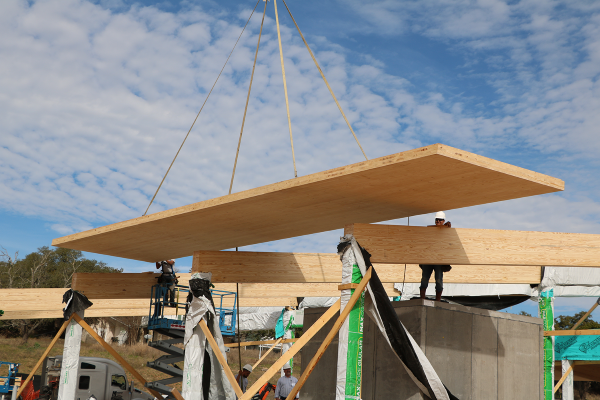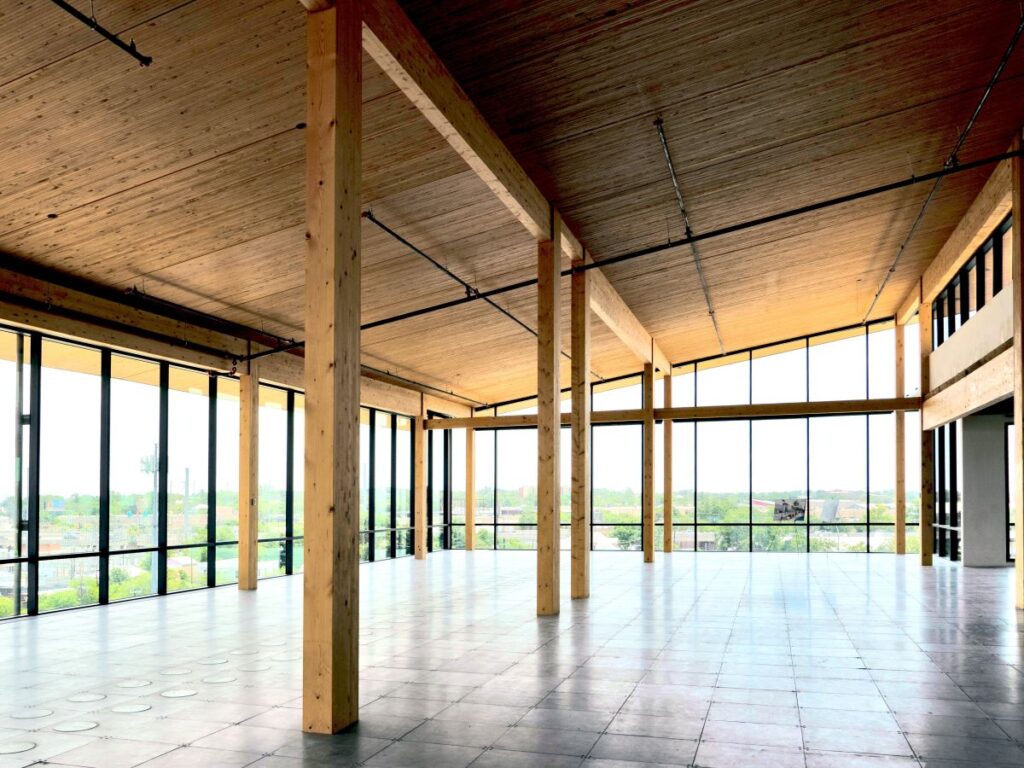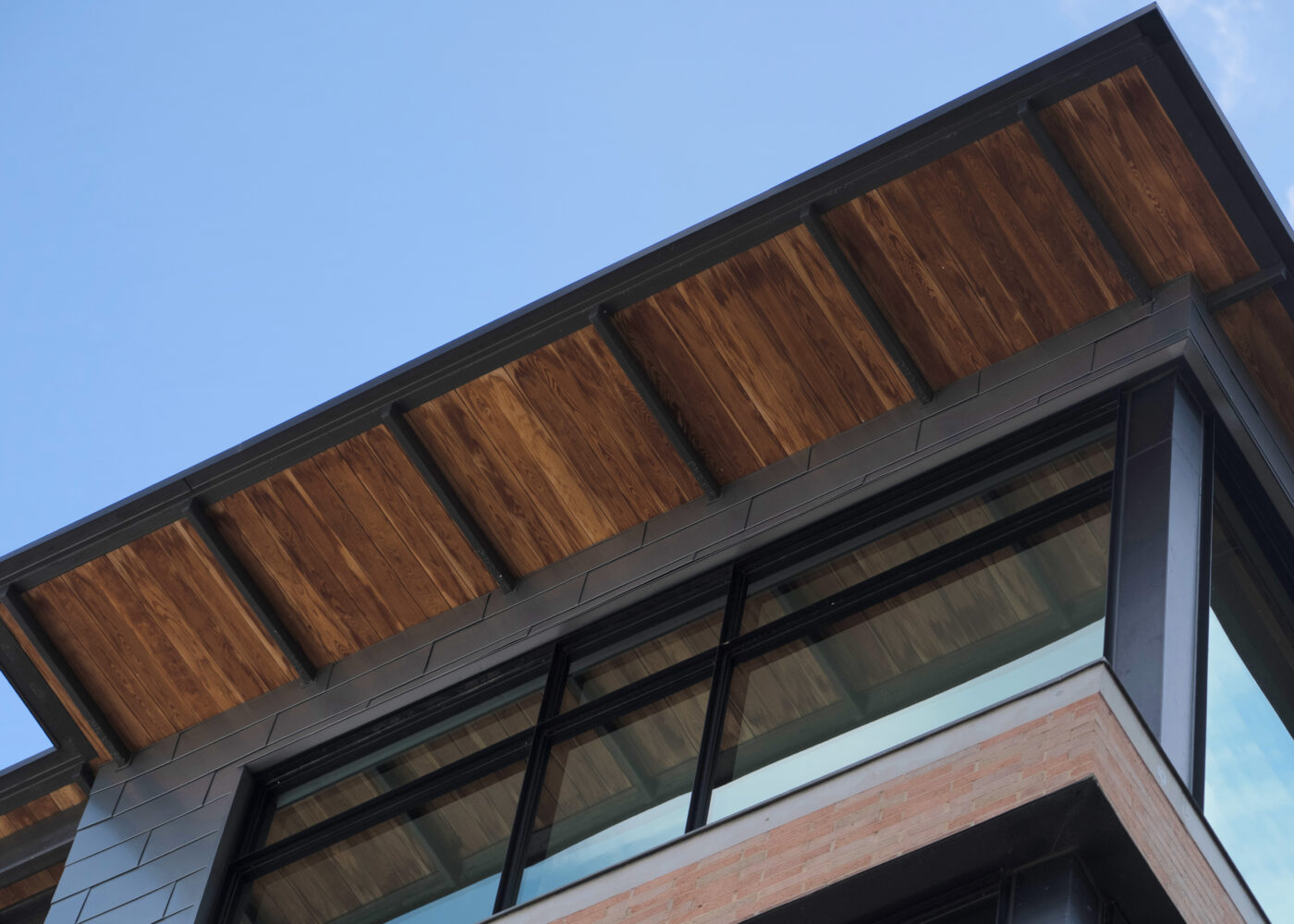The next generation of sustainable construction is already growing in Texas. We’ve been building with timber for thousands of years, but now we are using it to build big. Mass timber, a suite of large, engineered wood products, is ready to transform our state’s economy, environment and our skylines.
The four most common types of mass timber used in Texas are:
- Cross-laminated timber (CLT). Large panels are created by layering wood boards perpendicular to each other and binding them with an adhesive. CLT panels are in odd-numbered layers of three, five, seven, etc. They have exceptional strength, stability, rigidity, and design flexibility and can be used for walls, floors, and roofs.
- Glued-laminated timber (Glulam). This is a beam made from multiple layers of wood that are bonded together. Glulam is used for structural support and can be shaped into various forms including curves.
- Nail-laminated timber (NLT). This type consists of dimensional lumber stacked together and fastened with nails. It is a simpler and less expensive option for floor and roof systems.
- Dowel-laminated timber (DLT). Similar to nail-laminated timber, but instead of nails, it uses dowels to connect the layers of wood, providing increased stiffness and strength.
Mass timber is more than a building material; it is a complete construction system. Engineered panels and beams are precisely fabricated off-site using digital design models to ensure accuracy and reduce waste. Once completed, these components are transported to the job site where they arrive ready for quick assembly with detailed installation instructions. This system streamlines construction, lowers on-site labor and disruption, and provides a higher level of precision and efficiency than traditional building methods.
Cross-laminated timber
There is a growing interest in using mass timber, especially cross-laminated timber, for construction. CLT is an innovative and bold new technology that is making wood stronger and faster to build with than ever before. It uses wood grown from sustainable working forests for the construction of commercial, institutional, residential, and industrial buildings of all types and scales.

Benefits of cross-laminated timber construction
Renewable material
While steel and concrete are extractive and deplete natural resources, trees are a renewable resource that can be regrown right here in the state. Trees harvested for timber are immediately replaced and then grown and managed until the next harvest. Mass timber systems enable Texans to rethink how we grow our communities and help to ensure that our forests remain forested.
Environmental benefits
Working forests provide numerous benefits to society, including cleaning our air, purifying our drinking water, preventing erosion, and providing wildlife habitat and recreation opportunities.
Carbon sequestration and reduced energy use
CLT panels store carbon captured from the atmosphere, keeping it out of the air and preserving it in durable wood products that can become the structure of our buildings. In this way, CLT construction serves as long-term carbon storage. As trees grow, they absorb CO₂, and when the wood is used in buildings, that carbon stays locked away for decades. Producing CLT also emits far less carbon and uses significantly less energy than steel or concrete, while delivering comparable strength and performance.
Faster, more affordable construction
Cross-laminated timber offers a lighter, more efficient alternative to concrete and steel, saving developers both time and money. Because CLT panels are prefabricated off-site and assembled quickly on-site, construction timelines are significantly shortened compared to traditional materials that require lengthy on-site processes like forming and curing. In addition, CLT is often made from wood grown locally, which reduces transportation distances, lowers the environmental footprint, and keeps more of the economic value in our own communities.
Safety and strength
CLT panels are engineered for exceptional strength and resilience. They have been used safely in buildings up to 18 stories tall and are designed to perform well under seismic and high-wind conditions. In fire tests, CLT maintains its structural integrity longer than unprotected steel because the outer layer chars, forming a protective barrier that slows heat penetration and preserves the core of the panel.
Supports local economies
Texas-grown southern yellow pine is sustainably managed, harvested, transported, and processed at sawmills across the state, supporting a $54 billion forest sector that provides jobs in rural communities and drives economic growth statewide. Building with CLT strengthens this economy by using wood grown and produced right here in Texas.
Aesthetics
Exposed wood brings warmth and natural appeal to any space. Mass timber buildings showcase the texture and character of wood, creating inviting environments that promote comfort, focus, and well-being. The natural patterns and color variations in each panel add visual interest while connecting people to the calming qualities of nature.
Landowners and working forests
Strong forest product markets give landowners a reason to keep their forests and continue investing in good stewardship. Texas has the potential to be a major resource base, market, and future producer of southern yellow pine mass timber, with 8 of the 15 fastest-growing U.S. cities located in the state.

